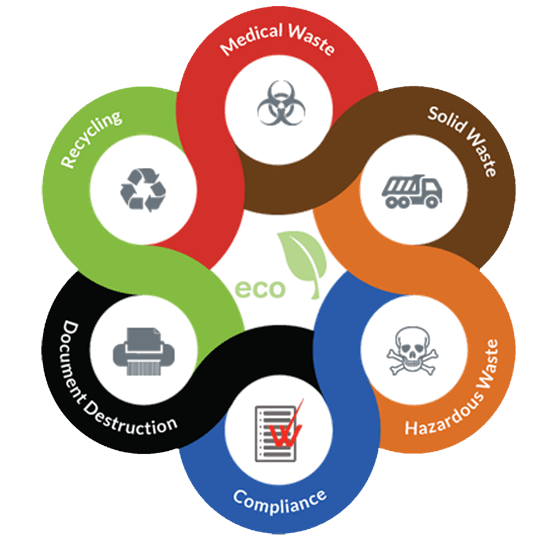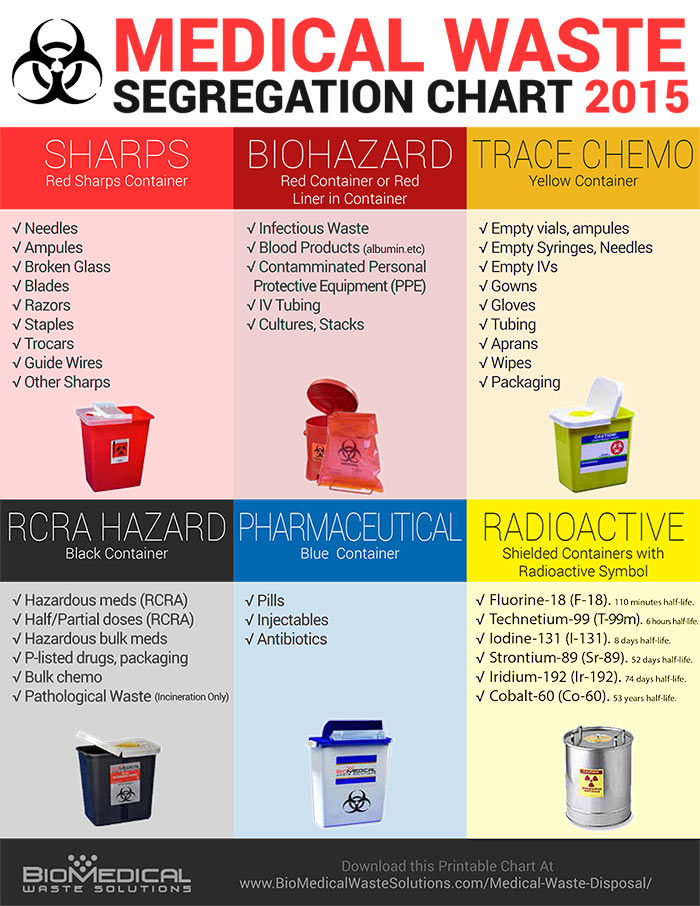Sustainable Solutions for Medical Waste Disposal
The proper monitoring and disposal of medical waste is crucial in keeping a risk-free and lasting health care system. This introduction will certainly check out various lasting solutions for clinical waste disposal, including waste segregation and sorting, on-site waste therapy systems, reusing and reuse programs, waste-to-energy conversion technologies, as well as collaboration and education efforts.
Waste Partition and Sorting
The procedure of waste partition and sorting is essential in ensuring appropriate monitoring and disposal of medical waste. Medical waste is categorized right into different categories based on its possible threat to human health and the atmosphere. Correct partition and sorting of waste help to reduce the danger of contamination and make certain that each kind of waste is dealt with and taken care of appropriately.
The initial step in waste partition and sorting is to recognize and divide various sorts of medical waste at the point of generation. This includes identifying the various categories of waste, such as contagious waste, sharps waste, pharmaceutical waste, and chemical waste. medical waste removal. Each category requires specific taking care of and disposal techniques to stop damage to health care employees, individuals, and the atmosphere

On-site Waste Treatment Equipments
Proceeding from the previous subtopic on waste segregation and sorting, an effective solution for sustainable clinical garbage disposal is the application of on-site waste therapy systems - medical waste removal. These systems allow healthcare centers to treat their clinical waste on-site, decreasing the requirement for transport and disposal at off-site centers. On-site waste treatment systems commonly include technologies such as autoclaves, microwave systems, or chemical sanitation units
Autoclaves, generally utilized in healthcare setups, use high-pressure vapor to disinfect and treat medical waste. This procedure successfully eliminates microorganisms, viruses, and various other potentially unsafe bacteria, providing the waste risk-free for more handling and disposal. Microwave systems, on the other hand, usage microwave radiation to heat and deal with the waste, attaining similar outcomes to autoclaves.
Chemical disinfection systems entail the use of chemicals to decontaminate and treat medical waste. These devices can make use of various anti-bacterials, such as chlorine-based solutions, to reduce the effects of pathogens and decrease the threat of contamination. The cured waste can then be securely thrown away in regular waste streams or go through more treatment, such as shredding or incineration.
Executing on-site waste therapy systems supplies a number of benefits. It lowers the environmental influence connected with carrying clinical waste to off-site facilities, lessening carbon exhausts and the risk of mishaps throughout transport. Additionally, it gives healthcare facilities with more control over the therapy process, making certain compliance with policies and lowering the capacity for unapproved access to delicate medical waste.
Recycling and Reuse Programs
To additionally enhance lasting medical waste disposal techniques, healthcare facilities can carry out recycling and reuse programs, developing upon the structure of on-site waste therapy systems. Reusing and reuse programs use an added layer of ecological obligation by drawing away medical waste from garbage dump and finding alternative uses for specific materials.
One secret facet of reusing and reuse programs is the partition of waste at the source. medical waste disposal service. By applying correct waste partition protocols, healthcare facilities can separate recyclable materials, such as plastics, metals, and glass, from non-recyclable waste. This enables the effective recycling of these products, lowering the demand for virgin resources and minimizing the environmental effect of clinical garbage disposal
In enhancement to reusing, healthcare centers can explore chances for reusing specific medical products. For example, single-use products like medical drapes and dress can be decontaminated and recycled, lowering the requirement for new materials and minimizing waste generation. Multiple-use sharps containers can likewise be utilized, reducing the quantity of plastic waste produced from disposable containers.
Implementing recycling and reuse programs calls for appropriate infrastructure and training - WasteX Medical Waste Disposal. Health care facilities have to invest in appropriate reusing bins, partition systems, and sterilization tools, in addition to guarantee team are educated on correct waste administration techniques
Waste-to-Energy Conversion Technologies
One prospective technique to resolve medical garbage disposal sustainably is via the application of waste-to-energy conversion technologies. These modern technologies offer an encouraging service to the growing issue of clinical waste, which positions substantial environmental and public health and wellness threats. right here Waste-to-energy conversion involves transforming the natural components of medical waste right into power, such as heat or power, with numerous procedures like incineration, gasification, and pyrolysis.
Incineration is one of the most generally used waste-to-energy innovation for clinical garbage disposal - WasteX Medical Waste Disposal. It includes the regulated burning of waste at heats, transforming it right into ash, gases, and warmth. This warmth can be made use of to create vapor, which can after that be exchanged electricity
Pyrolysis and gasification are newer technologies that provide more ecologically pleasant options to incineration. Pyrolysis entails warming the waste in the lack of oxygen, resulting in the manufacturing of gases and char. Gasification, on the other hand, converts waste right into an artificial gas or "syngas" that can be used as a gas for electricity generation or various other commercial procedures.
These waste-to-energy conversion innovations not only decrease the volume of clinical waste however likewise offer a source of renewable resource. Furthermore, they can help in reducing greenhouse gas emissions and reliance on nonrenewable fuel sources (WasteX Medical Waste Disposal). It is vital to make certain that these modern technologies are carried out with appropriate emissions regulate actions to lessen any possible unfavorable effects on air quality and public health and wellness.
Collaboration and Education Efforts
Cooperation among stakeholders in the health care sector is important for applying sustainable services for medical garbage disposal. In order to effectively resolve the challenges related to medical waste management, it is necessary for healthcare facilities, waste administration firms, regulators, and other appropriate events to work together.

Furthermore, education and learning campaigns play a crucial role in promoting sustainable techniques. Medical care specialists require to be familiar with the environmental impact of inappropriate waste monitoring and the value of carrying out sustainable services. Training programs and instructional materials can help them understand the correct segregation of waste, the use of environmentally friendly alternatives, and the advantages of waste-to-energy conversion innovations.
Collaboration and education and learning can additionally help with the development of laws and standards for medical garbage disposal. By functioning together, stakeholders can add to the development of comprehensive policies that make sure risk-free handling, transportation, and therapy of clinical waste.
Final Thought
To conclude, adopting lasting options for medical garbage disposal is critical in order to reduce the unfavorable effect on the setting and public wellness. Waste partition and sorting, on-site waste therapy systems, recycling and reuse programs, waste-to-energy conversion modern technologies, and collaboration and education and learning campaigns are all vital methods to accomplish this objective. Executing these remedies needs cooperation between health care centers, waste administration firms, and government companies, along with continuous education and recognition campaigns.
The process of waste partition and sorting is crucial in making certain proper administration and disposal of clinical waste.The first action in waste segregation and sorting is to determine and divide various types of clinical waste at the point of generation. This involves identifying the different groups of waste, such as infectious waste, sharps waste, pharmaceutical waste, and chemical waste.Proceeding from the previous subtopic on waste partition and sorting, a reliable remedy for lasting clinical waste disposal is the application of on-site waste treatment systems. The treated waste can then be safely disposed of in regular waste streams or go through more therapy, such as shredding or incineration.